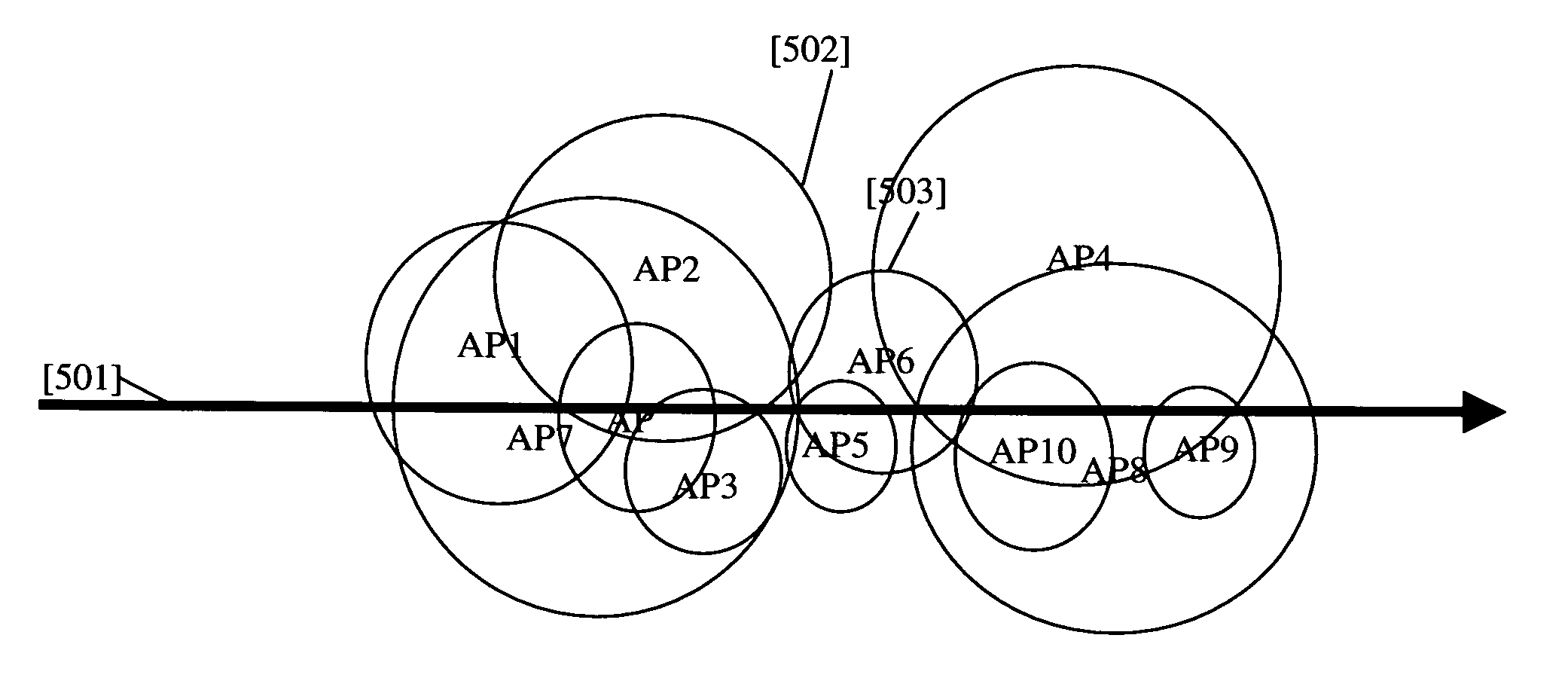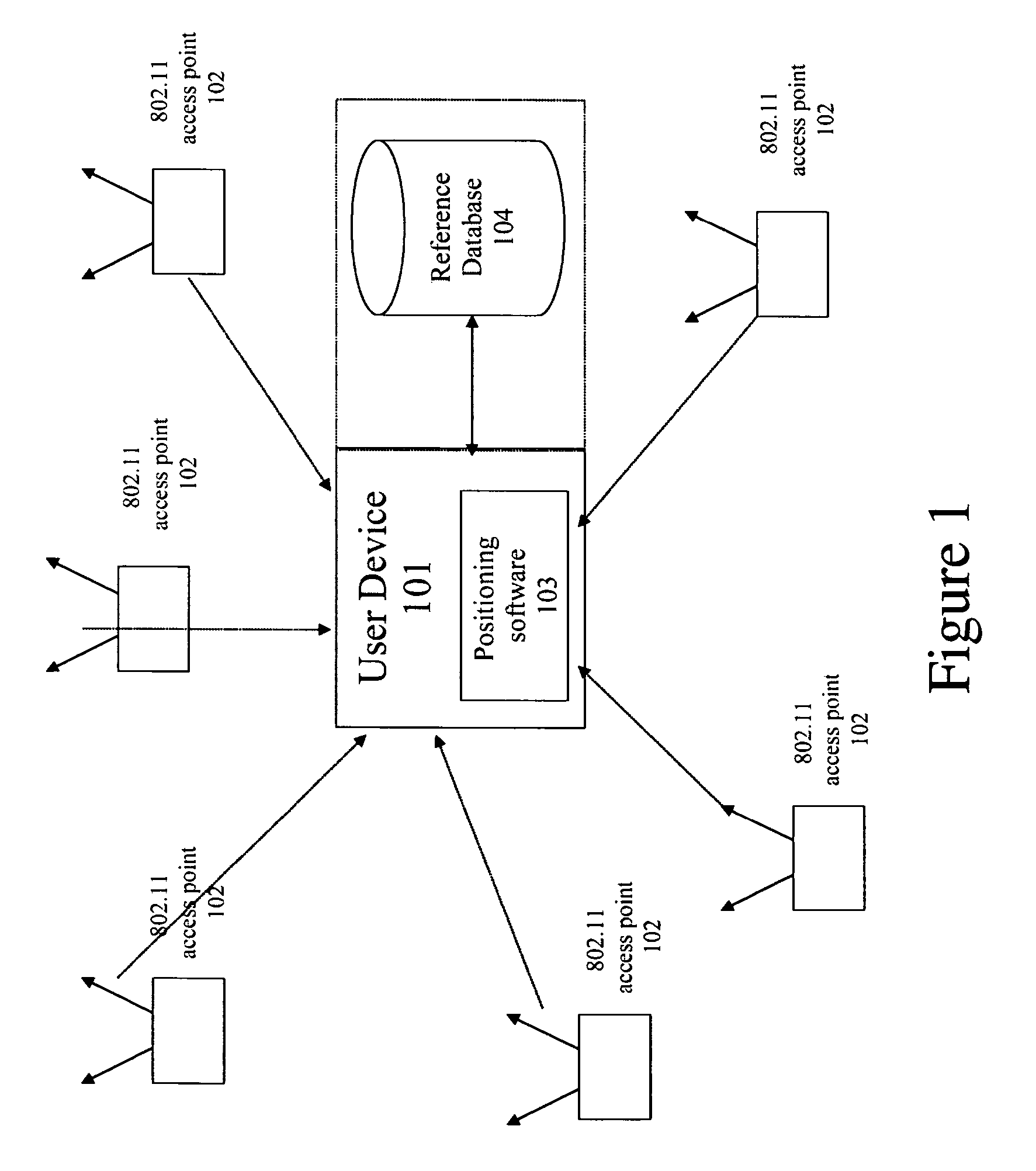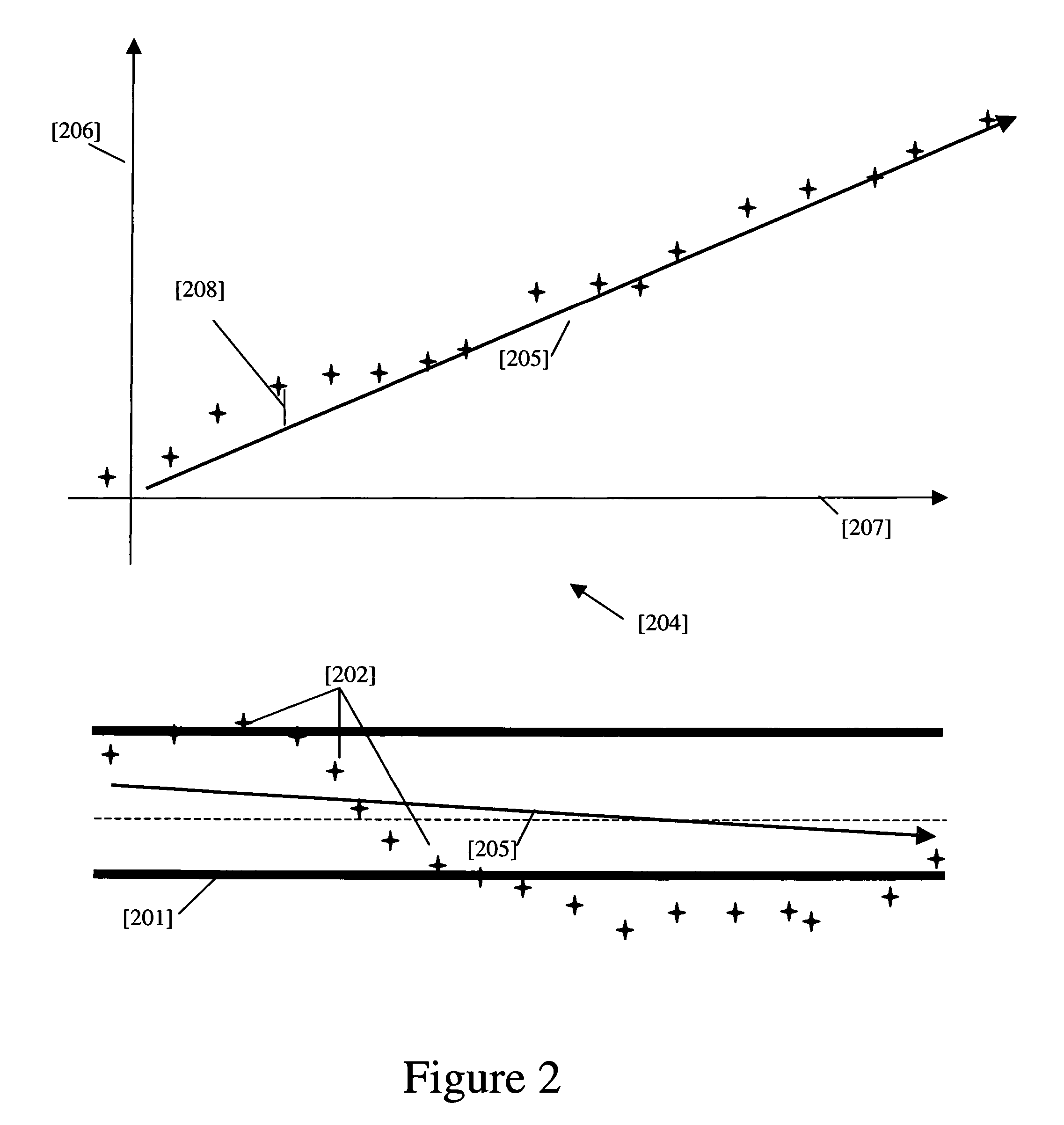Estimation of speed and direction of travel in a WLAN positioning system
a positioning system and speed and direction technology, applied in the direction of wireless commuication services, location information based services, instruments, etc., can solve the problems of ineffective wide-area deployment, high accuracy requirements for these use cases, and no speed and bearing estimation system in the system
- Summary
- Abstract
- Description
- Claims
- Application Information
AI Technical Summary
Benefits of technology
Problems solved by technology
Method used
Image
Examples
Embodiment Construction
[0038]Embodiments of the invention facilitate the estimation of speed and bearing of a user equipped with a WLAN device by using WLAN radio signals. Proliferation of WLAN access points in recent years created a blanket of WLAN radio waves everywhere. Therefore, almost in any place, there is a great possibility to detect WLAN radio waves, especially in urban areas. There are important features embedded in WLAN and WLAN technology which makes it more attractive for speed and bearing estimation in metro areas, including that WLAN access points are stationary, WLAN access points can be found almost anywhere, the WLAN access points are sharing the same spectrum, and the spectrum used by WLAN access points is free.
[0039]Embodiments of the invention provide a system and a methodology for continuously maintaining and updating speed and bearing estimation of a user using radio waves of public and private WLAN access points. The user scans and detects public and private WLAN access points and...
PUM
 Login to View More
Login to View More Abstract
Description
Claims
Application Information
 Login to View More
Login to View More - R&D
- Intellectual Property
- Life Sciences
- Materials
- Tech Scout
- Unparalleled Data Quality
- Higher Quality Content
- 60% Fewer Hallucinations
Browse by: Latest US Patents, China's latest patents, Technical Efficacy Thesaurus, Application Domain, Technology Topic, Popular Technical Reports.
© 2025 PatSnap. All rights reserved.Legal|Privacy policy|Modern Slavery Act Transparency Statement|Sitemap|About US| Contact US: help@patsnap.com



